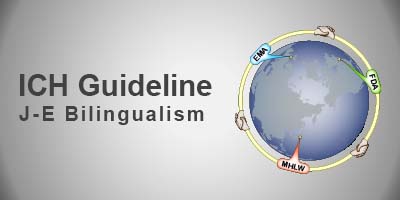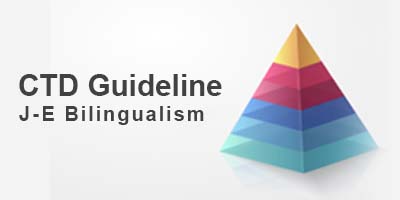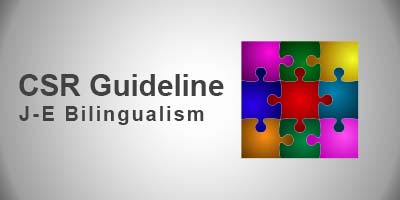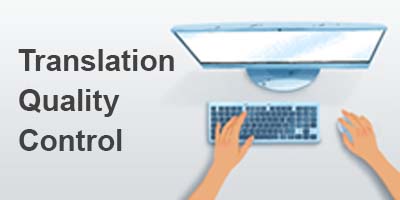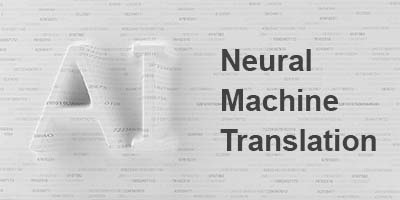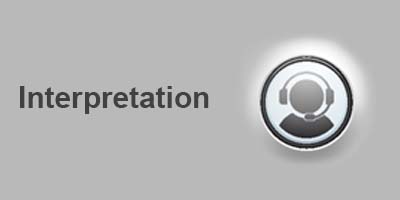平成7年3月20日薬審第227号
各都道府県衛生主管部(局)長あて 厚生省薬務局審査課長通知
ICH Harmonised Tripartite Guideline
Having reached Step 4 of the ICH Process at the ICH Steering Committee meeting on 27 October 1994, this guideline is recommended for adoption to the three regulatory parties to ICH
治験中に得られる安全性情報の取り扱いについて
1.はじめに
治験中に得られる重要な安全性情報の収集方法を各国で統一し,必要に応じて適切な措置を講じることは有益なことである。その際,手続きのみならず,用語や定義についても国際的な合意がなされることが望ましい。医科学国際組織委員会(Council for International Organizations of Medical Sciences ; CIOMS)の作業委員会による市販中の医薬品についての副作用の緊急報告と定期的な安全性情報の報告に関する先駆的な活動は参考となる。しかしながら,開発中の医薬品,その中でも特に開発初期段階にあるものやいかなる国においてもまだ市販されていないものについては,特別な配慮が必要となる。一方,諸外国において既に市販中である医薬品については,市販後の情報として得られる安全性データは,当該医薬品がまだ治験段階にある国の規制当局にとって関心が持たれるものである。従って,市販前後における安全性情報の報告の考え方とその実施は相互に関連しているとみなすのが妥当であり,実際的でもある。
Clinical Safety Data Management: Definitions and Standards for Expedited Reporting
I. INTRODUCTION
It is important to harmonise the way to gather and, if necessary, to take action on important clinical safety information arising during clinical development. Thus, agreed definitions and terminology, as well as procedures, will ensure uniform Good Clinical Practice standards in this area. The initiatives already undertaken for marketed medicines through the CIOMS-1 and CIOMS-2 Working Groups on expedited (alert) reports and periodic safety update reporting, respectively, are important precedents and models. However, there are special circumstances involving medicinal products under development, especially in the early stages and before any marketing experience is available. Conversely, it must be recognised that a medicinal product will be under various stages of development and/or marketing in different countries, and safety data from marketing experience will ordinarily be of interest to regulators in countries where the medicinal product is still under investigational-only (Phase 1, 2, or 3) status. For this reason, it is both practical and well-advised to regard pre-marketing and post-marketing clinical safety reporting concepts and practices as interdependent, while recognising that responsibility for clinical safety within regulatory bodies and companies may reside with different departments, depending on the status of the product (investigational vs. marketed).
本通知の目的は,治験中に得られる安全性情報の取り扱いに関する下記の事項について国際的な合意を得ることである。
・安全性情報の報告に関連する基本的な用語と定義の確立
・治験中に得られる安全性情報の緊急報告の取り扱いに関する適切な手順の策定
There are two issues within the broad subject of clinical safety data management that are appropriate for harmonisation at this time:
(1) the development of standard definitions and terminology for key aspects of clinical safety reporting, and
(2) the appropriate mechanism for handling expedited (rapid) reporting, in the investigational (i.e., pre-approval) phase.
The provisions of this guideline should be used in conjunction with other ICH Good Clinical Practice guidelines.
2.安全性情報の報告に関連する用語と定義
1)基本用語
有害事象,副作用,予測できない副作用という用語の定義については,WHO 国際医薬品モニタリングセンター(Uppsala, Sweden)の30を超える協力センターで合意がなされている。*1 これらの定義は,臨床試験を含む全ての場合に適用し得るものであるが,特に承認前の開発段階で使用するためには若干の修正が必要である。
*1 Edwards, I.R., et al, Harmonisation in Pharmacovigilance. Drug Safety10 :93-102,1994.
WHO 協力センターでの定義を参考として,本通知における定義は以下のとおりである。
II. DEFINITIONS AND TERMINOLOGY ASSOCIATED WITH CLINICAL SAFETY EXPERIENCE
A. Basic Terms
Definitions for the terms adverse event (or experience), adverse reaction, and unexpected adverse reaction have previously been agreed to by consensus of the more than 30 Collaborating Centres of the WHO International Drug Monitoring Centre (Uppsala, Sweden).
[Edwards, I.R., et al, Harmonisation in Pharmacovigilance. Drug Safety 10(2): 93-102, 1994.]
Although those definitions can pertain to situations involving clinical investigations, some minor modifications are necessary, especially to accommodate the pre-approval, development environment.
The following definitions, with input from the WHO Collaborative Centre, have been agreed:
(1) 有害事象(Adverse Event(or Experience))
医薬品が投与された患者または被験者に生じたあらゆる好ましくない医療上のできごと。必ずしも当該医薬品の投与との因果関係が明らかなもののみを示すものではない。
つまり有害事象とは,医薬品が投与された際に起こる,あらゆる好ましくない,あるいは意図しない徴侯(臨床検査値の異常を含む),症状,または病気のことであり,当該医薬品との因果関係の有無は問わない。
1. Adverse Event (or Adverse Experience)
Any untoward medical occurrence in a patient or clinical investigation subject administered a pharmaceutical product and which does not necessarily have to have a causal relationship with this treatment.
An adverse event (AE) can therefore be any unfavourable and unintended sign (including an abnormal laboratory finding, for example), symptom, or disease temporally associated with the use of a medicinal product, whether or not considered related to the medicinal product.
(2) 副作用(Adverse Drug Reaction)
病気の予防,診断もしくは治療,または生理機能を変える目的で投与された(投与量にかかわらない)医薬品に対する反応のうち,有害で意図しないもの。
医薬品に対する反応とは,有害事象のうち当該医薬品との因果関係が否定できないものを言う。
2. Adverse Drug Reaction (ADR)
In the pre-approval clinical experience with a new medicinal product or its new usages, particularly as the therapeutic dose(s) may not be established:
all noxious and unintended responses to a medicinal product related to any dose should be considered adverse drug reactions.
The phrase “responses to a medicinal products” means that a causal relationship between a medicinal product and an adverse event is at least a reasonable possibility, i.e., the relationship cannot be ruled out.
Regarding marketed medicinal products, a well-accepted definition of an adverse drug reaction in the post-marketing setting is found in WHO Technical Report 498 [1972] and reads as follows:
A response to a drug which is noxious and unintended and which occurs at doses normally used in man for prophylaxis, diagnosis, or therapy of disease or for modification of physiological function.
The old term “side effect” has been used in various ways in the past, usually to describe negative (unfavourable) effects, but also positive (favourable) effects. It is recommended that this term no longer be used and particularly should not be regarded as synonymous with adverse event or adverse reaction.
(3) 予測できない副作用(Unexpected Adverse Drug Reaction)
副作用のうち,治験担当医師用治験薬概要(Investigator’s Brochure 以下,治験薬概要)に記載されていないもの,あるいは記載されていてもその性質や重症度が記載内容と一致しないもの。
3. Unexpected Adverse Drug Reaction
An adverse reaction, the nature or severity of which is not consistent with the applicable product information (e.g., Investigator’s Brochure for an unapproved investigational medicinal product). (See section III.C.)
2)重篤*2な有害事象または副作用
治験中に有害事象が発現し,当該医薬品との因果関係が疑われる(すなわち副作用)と,その後の開発方針に重要な変更(用法・用量,患者層,必要な観察・検査項目,同意書式等の変更)が必要となる場合がある。これは,生命または生理機能を脅かすような副作用の場合に特に言えることである。このような副作用は直ちに規制当局へ報告されるべきである。
B. Serious Adverse Event or Adverse Drug Reaction
During clinical investigations, adverse events may occur which, if suspected to be medicinal product-related (adverse drug reactions), might be significant enough to lead to important changes in the way the medicinal product is developed (e.g., change in dose, population, needed monitoring, consent forms). This is particularly true for reactions which, in their most severe forms, threaten life or function. Such reactions should be reported promptly to regulators.
従って,その副作用の性質(重篤度),またはそれが重要な予測できない情報であるか否かにより緊急報告の必要性の有無を判断するための医療上または行政上の特別な基準が必要となる。
現在使用されている,または議論中の各国の規制上の定義などを検討した結果,下記に示す項目がそれらの意図するところを包含すると考えられる。
重篤な有害事象または副作用とは,医薬品が投与された(投与量にかかわらない)際に生じたあらゆる好ましくない医療上のできごとのうち,以下のものを言う。
a.死に至るもの
b.生命を脅かすもの*3
c.治療のため入院または入院期間の延長が必要となるもの
d.永続的または顕著な障害・機能不全に陥るもの
e.先天異常を来すもの
*2 「重症」という言葉は,ある特定の事象の強さ(激しさ)を表現するために使われることが多い(心筋梗塞の程度が軽度(mild),中等度(moderate),高度(重症,severe)のように).しかしながら,重症の場合でも医学的意義は比較的小さい(重症の頭痛のように)こともある.重症は「重篤」と同義ではない.
「重篤」は,患者の生命または機能を危険にさらす事象に関連した患者や事象の転帰または処置基準に基づく用語である.
重篤度(重症度ではない)が規制上の報告義務を規定する指針になる.
*3 「生命を脅かす」とは,その事象が起こった際に患者が死の危険にさらされていたという意味であり,その事象がもっと重症なものであったなら死に至っていたかもしれないという仮定的な意味ではない.
その他の状況,すなわち即座に生命を脅かしたり死や入院には至らなくとも,患者を危機にさらしたり,上記a~e のような結果に至らぬように処置を必要とするような重大な事象の場合には,緊急報告を必要とするか否かを医学的および科学的根拠に基づいて判断する必要があり,通常,それらも重篤とみなすべきである。
この例としては,救急室等で集中冶療を必要とする気管支痙攣,入院には至らないものの血液障害または痙攣を来した場合,薬物依存症または薬物乱用などが挙げられる。
Therefore, special medical or administrative criteria are needed to define reactions that, either due to their nature (“serious”) or due to the significant, unexpected information they provide, justify expedited reporting.
To ensure no confusion or misunderstanding of the difference between the terms “serious” and “severe,” which are not synonymous, the following note of clarification is provided:
The term “severe” is often used to describe the intensity (severity) of a specific event (as in mild, moderate, or severe myocardial infarction); the event itself, however, may be of relatively minor medical significance (such as severe headache). This is not the same as “serious,” which is based on patient/event outcome or action criteria usually associated with events that pose a threat to a patient’s life or functioning. Seriousness (not severity) serves as a guide for defining regulatory reporting obligations.
After reviewing the various regulatory and other definitions in use or under discussion elsewhere, the following definition is believed to encompass the spirit and meaning of them all:
A serious adverse event (experience) or reaction is any untoward medical occurrence that at any dose:
* results in death,
* is life-threatening,
NOTE: The term “life-threatening” in the definition of “serious” refers to an event in which the patient was at risk of death at the time of the event; it does not refer to an event which hypothetically might have caused death if it were more severe.
* requires inpatient hospitalisation or prolongation of existing hospitalisation,
* results in persistent or significant disability/incapacity, or
* is a congenital anomaly/birth defect.
Medical and scientific judgement should be exercised in deciding whether expedited reporting is appropriate in other situations, such as important medical events that may not be immediately life-threatening or result in death or hospitalisation but may jeopardise the patient or may require intervention to prevent one of the other outcomes listed in the definition above. These should also usually be considered serious.
Examples of such events are intensive treatment in an emergency room or at home for allergic bronchospasm; blood dyscrasias or convulsions that do not result in hospitalisation; or development of drug dependency or drug abuse.
3)副作用の予測可能性
緊急報告の目的は,重篤な副作用に関する新しい重要な情報を規制当局,治験担当医師およびその他の適切な関係者に提供することである。従って,通常,緊急報告は今までに観察または報告されていない事象に関して行うこととなり,ある事象が「予測できるものか否か」を判断するための指針が必要になる。(当該医薬品の薬理学的性質から予測の可否を判断するのではなく,現在までに観察されたか否かの観点から予測できるかどうかという意味である。)
C. Expectedness of an Adverse Drug Reaction
The purpose of expedited reporting is to make regulators, investigators, and other appropriate people aware of new, important information on serious reactions. Therefore, such reporting will generally involve events previously unobserved or undocumented, and a guideline is needed on how to define an event as “unexpected” or “expected” (expected/unexpected from the perspective of previously observed, not on the basis of what might be anticipated from the pharmacological properties of a medicinal product).
2の1)の で述べたように「予測できない」副作用とは,副作用のうち,治験薬概要に記載されていないもの,または記載されていてもその性質や重症度が記載内容と一致しないものを言う。治験薬概要が改訂されるまでは,当該事象の発現の場合,緊急報告が必要となる。
As stated in the definition (II.A.3.), an “unexpected” adverse reaction is one, the nature or severity of which is not consistent with information in the relevant source document(s). Until source documents are amended, expedited reporting is required for additional occurrences of the reaction.
ある有害事象または副作用が予測できるか否かの判断は,次のような資料または状況に基づいて行われる。
・世界中のいかなる国においても市販されていない医薬品については,治験薬概要が基本的な資料となる。
・既知で治験薬概要にも記載されている重篤な副作用でも,その特殊性や重症度に関して必要な情報が加わるような報告は予測できない事象とみなす。例えば,治験薬概要に記載されている以上に特定されている(限定的)か,または重症である事象は予測できないものと考える。例えば,急性腎不全に対する間質性腎炎の追加報告や,肝炎に対する劇症肝炎の追加などである。
The following documents or circumstances will be used to determine whether an adverse event/reaction is expected:
- For a medicinal product not yet approved for marketing in a country, a company’s Investigator’s Brochure will serve as the source document in that country. (See section III.F. and ICH Guideline for the Investigator’s Brochure.)
- Reports which add significant information on specificity or severity of a known, already documented serious ADR constitute unexpected events. For example, an event more specific or more severe than described in the Investigator’s Brochure would be considered “unexpected”. Specific examples would be (a) acute renal failure as a labeled ADR with a subsequent new report of interstitial nephritis and (b) hepatitis with a first report of fulminant hepatitis.
3.緊急報告のための基準
1)報告すべきもの
(1) 重篤で予測できない副作用
重篤で予測できない副作用は,全て緊急報告の対象となる。これには副作用の自発報告,及びデサイン,目的に関係なく全ての臨床試験または疫学研究中の副作用報告も含まれる*4。また,治験依頼者または企業に直接報告されない症例についても適用される(例えば出版物中に見られるものなど)。報告の情報源(臨床試験,自発報告など)は,常に明確にされるべきである。
III. STANDARDS FOR EXPEDITED REPORTING
A. What Should be Reported?
1. Single Cases of Serious, Unexpected ADRs
All adverse drug reactions (ADRs) that are both serious and unexpected are subject to expedited reporting. This applies to reports from spontaneous sources and from any type of clinical or epidemiological investigation, independent of design or purpose. It also applies to cases not reported directly to a sponsor or manufacturer (for example, those found in regulatory authority-generated ADR registries or in publications). The source of a report (investigation, spontaneous, other) should always be specified.
重篤であっても予測できる副作用は,通常,緊急報告の対象とはならない。また,臨床試験中に生じた重篤な事象で当該医薬品との因果関係が否定されたものは,それが予測できるか否かとは関係なく緊急報告の対象とはならない。重篤でない副作用は,それが予測できるか否かとは関係なく,通常,緊急報告の対象とはならない。
Expedited reporting of reactions which are serious but expected will ordinarily be inappropriate. Expedited reporting is also inappropriate for serious events from clinical investigations that are considered not related to study product, whether the event is expected or not. Similarly, non-serious adverse reactions, whether expected or not, will ordinarily not be subject to expedited reporting.
治験依頼者または企業は,重篤で予測できない副作用の報告を受けた場合,それが緊急報告の必要条件に当てはまる内容の場合は,情報源が何であれ該当する規制当局に迅速に報告しなければならない。
Information obtained by a sponsor or manufacturer on serious, unexpected reports from any source should be submitted on an expedited basis to appropriate regulatory authorities if the minimum criteria for expedited reporting can be met. See section III.B.
治験における症例については,因果関係の評価がなされるべきである。治験担当医師または治験依頼者により当該医薬品と因果関係が示唆されると判断されたものは,全て副作用とみなされる。市販中の医薬品に関する有害事象の報告(自発報告)は,当該医薬品と因果関係がある可能性が大きい。
Causality assessment is required for clinical investigation cases. All cases judged by either the reporting health care professional or the sponsor as having a reasonable suspected causal relationship to the medicinal product qualify as ADRs. For purposes of reporting, adverse event reports associated with marketed drugs (spontaneous reports) usually imply causality.
医薬品と事象との因果関係の大きさを記述するために多くの用語,尺度が用いられるが,「因果関係があるらしい」,「因果関係が疑われる」または「因果関係は否定できない」のような用語は,因果関係を示唆していると考えられる。
*4 本通知は,治験中に得られる安全性情報の取り扱い,重篤で予測できない副作用の緊急報告について規定したものであるが,例えばある医薬品が日本では治験中で米国では市販されている場合,米国での市販後の疫学研究中に重篤で予測できない副作用が報告された場合には,日本の厚生省にも本通知に基づいた緊急報告が必要となる。
Many terms and scales are in use to describe the degree of causality (attributability) between a medicinal product and an event, such as certainly, definitely, probably, possibly or likely related or not related. Phrases such as “plausible relationship,” “suspected causality,” or “causal relationship cannot be ruled out” are also invoked to describe cause and effect.
However, there is currently no standard international nomenclature. The expression “reasonable causal relationship” is meant to convey in general that there are facts (evidence) or arguments to suggest a causal relationship.
(2) その他
重篤な副作用の症例報告以外にも,迅速に規制当局に連絡し,状況に応じた適切な医学的・科学的判断を下さなければならない場合がある。一般的には,当該医薬品のリスク・ベネフィット評価に著しく影響を与えるような情報,または投与方法や治験計画全体の変更を考慮しなければならないような情報がそれに当てはまる。下記のような例が挙げられる。
a.「予測される」重篤な副作用の発現頻度が臨床的に重要と判断されるほど増加した場合。
b.生命を脅かすような疾患に使用される医薬品がその効果を有しないなど,患者が大きな危険にさらされる場合。
c.新たに得られた動物試験成績から安全性に関する重大な知見(発癌性など)が得られた場合。
- Other Observations
There are situations in addition to single case reports of “serious” adverse events or reactions that may necessitate rapid communication to regulatory authorities; appropriate medical and scientific judgement should be applied for each situation. In general, information that might materially influence the benefit-risk assessment of a medicinal product or that would be sufficient to consider changes in medicinal product administration or in the overall conduct of a clinical investigation represents such situations. Examples include:
- For an “expected,” serious ADR, an increase in the rate of occurrence which is judged to be clinically important.
- A significant hazard to the patient population, such as lack of efficacy with a medicinal product used in treating life-threatening disease.
- A major safety finding from a newly completed animal study (such as carcinogenicity).
2)報告期限
(1) 死亡または生命を脅かす予測できない副作用
副作用の中には,当該医薬品,またはその効能・効果,用法・用量,剤型等が未だ承認されていない国の規制当局に対して,極めて迅速な報告が必要となる程度に重要なものもある。治験計画の中止またはある種の制限を考慮せねばならないものである可能性もあるからである。治験中に生じた死亡または生命を脅かす予測できない副作用については,迅速な報告が必要である。この場合,治験依頼者は,その副作用が緊急報告の必要条件に当てはまると知った日から7日以内のできるだけ早い時期に規制当局に電話またはファックス等で知らせ,可能な限りの完全な報告書をさらに8日以内(計15日以内)に提出すること。この報告書には,同一または類似医薬品に関連する過去の経験を含めて,その新しい知見の重要性および影響の評価を記載する必要がある。
B. Reporting Time Frames
1. Fatal or Life-Threatening Unexpected ADRs
Certain ADRs may be sufficiently alarming so as to require very rapid notification to regulators in countries where the medicinal product or indication, formulation, or population for the medicinal product are still not approved for marketing, because such reports may lead to consideration of suspension of, or other limitations to, a clinical investigations program.
Fatal or life-threatening, unexpected ADRs occurring in clinical investigations qualify for very rapid reporting. Regulatory agencies should be notified (e.g., by telephone, facsimile transmission, or in writing) as soon as possible but no later than 7 calendar days after first knowledge by the sponsor that a case qualifies, followed by as complete a report as possible within 8 additional calendar days. This report must include an assessment of the importance and implication of the findings, including relevant previous experience with the same or similar medicinal products.
(2) その他の重篤で予測できない副作用
重篤で予測できない副作用のうち,死亡または生命を脅かすもの以外については,治験依頼者は,その副作用が緊急報告の必要条件に当てはまると知った日から15日以内のできるだけ早い時期に報告すること。
2. All Other Serious, Unexpected ADRs
Serious, unexpected reactions (ADRs) that are not fatal or life-threatening must be filed as soon as possible but no later than 15 calendar days after first knowledge by the sponsor that the case meets the minimum criteria for expedited reporting.
(3) 報告に必要な最低限の情報
上記に示す報告期限内に症例報告に必要な十分な記述や評価を行うための情報が入手できない場合もある。
しかしながら,緊急報告の目的に鑑み,初回報告は,少なくとも次の情報が得られている限り期間内に提出すること。
患者が特定されていること,被疑薬,報告の情報源,重篤で予測できない副作用と判断できる事象または転帰,及び治験においては被疑薬と当該事象または転帰との因果関係が否定できないこと。
なお,その後も追加情報の入手に努め,入手次第速やかに報告すること。
3. Minimum criteria for reporting
Information for final description and evaluation of a case report may not be available within the required time frames for reporting outlined above. Nevertheless, for regulatory purposes, initial reports should be submitted within the prescribed time as long as the following minimum criteria are met: an identifiable patient; a suspect medicinal product; an identifiable reporting source; and an event or outcome that can be identified as serious and unexpected, and for which, in clinical investigation cases, there is a reasonable suspected causal relationship.
Follow-up information should be actively sought and submitted as it becomes available.
3)報告方法
特定の報告様式は定めないが,緊急報告書中には基本的な情報項目(入手できる範囲で)が記載されることが重要である。記載が望ましいと考えられるデータ項目は,別添に示されている。緊急報告時に全てのデータが得られていない場合には,それらを追加入手するように努力する必要がある。
全ての報告は,当該医薬品を開発中の国の規制当局,及び報告が必要とされる他の公的な機関に提出されなければならない。
C. How to Report
The CIOMS-I form has been a widely accepted standard for expedited adverse event reporting.
However, no matter what the form or format used, it is important that certain basic information/data elements, when available, be included with any expedited report, whether in a tabular or narrative presentation. The listing in Attachment 1 addresses those data elements regarded as desirable; if all are not available at the time of expedited reporting, efforts should be made to obtain them. (See section III.B.)
All reports must be sent to those regulators or other official parties requiring them (as appropriate for the local situation) in countries where the drug is under development.
4)ブラインド治療症例の取り扱い
二重盲検試験のように治験依頼者も治験担当医師も個々の患者の治療内容を知らされていない時に重篤な事象が生じた場合,その患者のキーを開けるべきか否かの決定に迫られることがある。治験担当医師またはコントローラーによりキーが開けられれば,治験依頼者もその患者に対する治療内容を知ることになる。試験結果の最終解析が終了するまで全患者に対して盲検性を維持することは望ましいことであるが,ある重篤な事象が緊急報告するべきものである(予測できない事象であり,因果関係が疑われる)と判断された場合は,その症例についてのみ開鍵されることが望ましい。しかしながら,可能であれば,最終結果の解析・評価を担当する統計解析担当者らに対しては盲検性が維持されることが望ましい。
D. Managing Blinded Therapy Cases
When the sponsor and investigator are blinded to individual patient treatment (as in a double-blind study), the occurrence of a serious event requires a decision on whether to open (break) the code for the specific patient. If the investigator breaks the blind, then it is assumed the sponsor will also know the assigned treatment for that patient. Although it is advantageous to retain the blind for all patients prior to final study analysis, when a serious adverse reaction is judged reportable on an expedited basis, it is recommended that the blind be broken only for that specific patient by the sponsor even if the investigator has not broken the blind. It is also recommended that, when possible and appropriate, the blind be maintained for those persons, such as biometrics personnel, responsible for analysis and interpretation of results at the study’s conclusion.
盲検性を維持する利益よりも不利益の方が大きい場合もある。盲検性を維持した場合,プラセボや比較実対照薬(通常は市販薬)による有害事象発現症例が不必要にデータベースに登録され,最終的に開鍵した時点(規制当局に報告をした後,数週間から数カ月後になると思われる)で治験依頼者と規制当局のデータベースを確定的なものに改めなくてはならなくなる。事象が新規,重篤なもので当該医薬品との因果関係が疑われた際に,盲検性を維持したまま治験薬概要を改訂し,関係者に情報を知らせることは,適切でなく,また誤解を生じさせることにもなる。さらに1症例のみの盲検性を破っても,通常はその後の試験の実施や最終のデータ解析に有意な影響を与えることはほとんどないと考えられる。
There are several disadvantages to maintaining the blind under the circumstances described which outweigh the advantages. By retaining the blind, placebo and comparator (usually a marketed product) cases are filed unnecessarily. When the blind is eventually opened, which may be many weeks or months after reporting to regulators, it must be ensured that company and regulatory data bases are revised. If the event is serious, new, and possibly related to the medicinal product, then if the Investigator’s Brochure is updated, notifying relevant parties of the new information in a blinded fashion is inappropriate and possibly misleading. Moreover, breaking the blind for a single patient usually has little or no significant implications for the conduct of the clinical investigation or on the analysis of the final clinical investigation data.
しかしながら,致死的またはその他何らかの重篤な転帰が有効性の主要評価指標である場合は,盲検性が破られるとその試験の信頼性に問題が生じる可能性がある。このような,またはこれに類似する状況の場合には,重篤な有害事象のうち,疾患に関連する事象として取り扱い,通常の緊急報告の対象とはしない事象について,治験依頼者と規制当局との間であらかじめ取り決めをしておくことが適切であることもある。
However, when a fatal or other “serious” outcome is the primary efficacy endpoint in a clinical investigation, the integrity of the clinical investigation may be compromised if the blind is broken. Under these and similar circumstances, it may be appropriate to reach agreement with regulatory authorities in advance concerning serious events that would be treated as disease-elated and not subject to routine expedited reporting.
5)その他の問題
(1) 比較実対照薬またはプラセボに関連した副作用
比較実対照薬に関連した副作用を対照薬提供企業に報告するか,または規制当局に直接報告するかは,治験依頼者の責任により決定すること。治験依頼者は,決定に従い,当該副作用を対照薬提供企業または規制当局に報告すること。
プラセボに関連する事象については,通常は「副作用」の要件を満たさず,従って緊急報告の必要はない。
E. Miscellaneous Issues
1. Reactions Associated with Active Comparator or Placebo Treatment
It is the sponsor’s responsibility to decide whether active comparator drug reactions should be reported to the other manufacturer and/or directly to appropriate regulatory agencies. Sponsors must report such events to either the manufacturer of the active control or to appropriate regulatory agencies. Events associated with placebo will usually not satisfy the criteria for an ADR and, therefore, for expedited reporting.
(2) 複数の剤型または用法・用量のある医薬品
副作用の緊急報告は,正確を期すため,適応症,剤型,投与方法等ごとに行い,併せて他の適応症や剤型についての情報を提供すること。
2. Products with More than one Presentation or Use
To avoid ambiguities and uncertainties, an ADR that qualifies for expedited reporting with one presentation of a product (e.g., a dosage form, formulation, delivery system) or product use (e.g., for an indication or population), should be reported or referenced to regulatory filings across other product presentations and uses.
複数の剤型,処方,投与方法をもつ有効成分が治験中または市販中であることは珍しくない。剤型,処方,投与方法等により安全性に著しい差が生じることもあり,また,同じ製剤が異なる適応症,患者集団に用いられるときも同様である。従って,それぞれの場合によって「副作用がどの程度予測できるか」も異なってくると考えられ,それぞれに治験薬概要を分けて作成することが必要な場合もある。しかしながら,この種の資料には他の剤型等にも当てはまる包括的な副作用情報(全身的副作用等)も記載することが望ましい。必要があれば,剤型または用法特有の安全性情報などの個々の検討内容も含めるべきである。
It is not uncommon that more than one dosage form, formulation, or delivery system (oral, IM, IV, topical, etc.) of the pharmacologically active compound(s) is under study or marketed; for these different presentations there may be some marked differences in the clinical safety profile. The same may apply for a given product used in different indications or populations (single dose vs. chronic administration, for example). Thus, “expectedness” may be product or product-use specific, and separate Investigator’s Brochures may be used accordingly. However, such documents are expected to cover ADR information that applies to all affected product presentations and uses. When relevant, separate discussions of pertinent product-specific or use-specific safety information will also be included.
1つの剤型または用法に関して観察された副作用が緊急報告の対象となる場合,その有効成分を含む他の剤型または用法に対してもその情報が提供されることが望ましい。これは,場合によっては過剰報告または不必要な報告になるかもしれないが(例えば,静脈内投与で生じた静脈炎についての報告を経口投与だけで開発,販売されている国の規制当局に知らせること等),過少報告は避けられる。
It is recommended that any adverse drug reactions that qualify for expedited reporting observed with one product dosage form or use be cross referenced to regulatory records for all other dosage forms and uses for that product. This may result in a certain amount of overreporting or unnecessary reporting in obvious situations (for example, a report of phlebitis on IV injection sent to authorities in a country where only an oral dosage form is studied or marketed). However, underreporting is completely avoided.
(3) 試験終了後の事象
治験が完全に終了(治験計画書で定められた治療後の追跡訴査も含む)した後に,重篤な有害事象の発現について治験担当医師から治験依頼者に報告がなされることがある。ラグタイムがどんなに長くても,これはその試験についての報告であるので緊急報告の対象とされるべきであり,因果関係の評価と予測の有無により緊急報告が必要か否かが判断される。
3. Post-study Events
Although such information is not routinely sought or collected by the sponsor, serious adverse events that occurred after the patient had completed a clinical study (including any protocol-required post-treatment follow-up) will possibly be reported by an investigator to the sponsor.
Such cases should be regarded for expedited reporting purposes as though they were study reports. Therefore, a causality assessment and determination of expectedness are needed for a decision on whether or not expedited reporting is required.
6)治験担当医師と治験審査委員会に対する安全性に関する新たな情報の報告
安全性に関して新たに得られた情報については,「医薬品の臨床試験の実施に関する基準」(GCP)に従って適切な対応をとること。
治験依頼者は治験薬概要を適宜改訂し,安全性に関する情報を最新のものにしておく必要がある。
F. Informing Investigators And Ethics Committees/ Institutional Review Boards of New Safety Information
International standards regarding such communication are discussed within the ICH GCP Guidelines, including the addendum on “Guideline for the Investigator’s Brochure.” In general, the sponsor of a study should amend the Investigator’s Brochure as needed, and in accord with any local regulatory requirements, so as to keep the description of safety information updated.
別添:重篤な副作用の緊急報告に含まれるべき必須情報
以下の項目リストは,CIOMS-1,WHO 国際医薬品モニタリングセンター,及び各国の規制当局が現在使用中あるいは提案している書式やガイドライン中で既に確立されている事項に基づいたリストである。項目中のいくつかは,状況によっては必要のないものもある。緊急報告の目的に最低限必要な情報は,患者が特定されていること,被疑薬,報告の情報源,重篤で予測できない副作用と判断できる事象または転帰,及び治験においては被疑薬と当該事象または転帰との因果関係が否定できないことである。また,リスト中の他の項目についてもできるだけ多くの追跡情報を得るように努める必要がある。
Attachment 1: KEY DATA ELEMENTS FOR INCLUSION IN EXPEDITED REPORTS OF SERIOUS ADVERSE DRUG REACTIONS
The following list of items has its foundation in several established precedents, including those of CIOMS-I, the WHO International Drug Monitoring Centre, and various regulatory authority forms and guidelines. Some items may not be relevant depending on the circumstances. The minimum information required for expedited reporting purposes is: an identifiable patient, the name of a suspect medicinal product, an identifiable reporting source, and an event or outcome that can be identified as serious and unexpected and for which, in clinical investigation cases, there is a reasonable suspected causal relationship. Attempts should be made to obtain follow-up information on as many other listed items pertinent to the case.
1.患者の詳細
・関係する他の確認事項(例えば,症例No.等)
・性
・年齢,生年月日
・体重
・身長
1. Patient Details
Initials
Other relevant identifier (clinical investigation number, for example)
Gender
Age and/or date of birth
Weight
Height
2.被疑薬
・商品名,一般名(成分名),治験記号など
・ロット番号
・被疑薬が処方または投与された目的(効能・効果)
・剤型,含量
・1日投与量と用法(単位を明記すること)
・投与経路
・投与開始日と時刻
・投与中止日と時刻,または投与期間
2. Suspected Medicinal Product(s)
International Non-Proprietary Name (INN)
Batch number
Indication(s) for which suspect medicinal product was prescribed or tested
Dosage form and strength
Daily dose and regimen (specify units – e.g., mg, ml, mg/kg)
Route of administration
Starting date and time of day
Stopping date and time, or duration of treatment
3.他の治療
併用薬(一般用医薬品を含む),併用療法についても被疑薬と同様の情報を提供する。
3. Other Treatment(s)
For concomitant medicinal products (including non-prescription/OTC medicinal products) and non-medicinal product therapies, provide the same information as for the suspected product.
4.副作用の詳細
当該副作用を重篤と判断した基準,発現部位と重症度を含めた副作用の詳細を示す。報告された徴侯,症状の詳細に加え,可能な限りその副作用の診断名を特定するよう努めるべきである。
・発現日時
・消失日時または持続期間
・投与中止後の経過,再投与後の経過
・場所(病院,自宅等)
・転帰
回復状況と後遺症に関する情報,必要とした特定の治療または試験とその結果
死亡症例については,死因,それと当該副作用との関連性,可能であれば剖検結果等(検死官のレポートを含む)
・他の情報
その症例の評価に役立つ関連情報,例えばアレルギー等の既往歴,薬物やアルコール依存歴,家族歴,特殊検査により得られた知見等
4. Details of Suspected Adverse Drug Reaction(s)
Full description of reaction(s) including body site and severity, as well as the criterion (or criteria) for regarding the report as serious should be given. In addition to a description of the reported signs and symptoms, whenever possible, attempts should be made to establish a specific diagnosis for the reaction.
Start date (and time) of onset of reaction
Stop date (and time) or duration of reaction
Dechallenge and rechallenge information
Setting (e.g., hospital, out-patient clinic, home, nursing home)
Outcome: information on recovery and any sequelae; what specific tests and/or treatment may have been required and their results; for a fatal outcome, cause of death and a comment on its possible relationship to the suspected reaction should be provided. Any autopsy or other postmortem findings (including a coroner’s report) should also be provided when available. Other information: anything relevant to facilitate assessment of the case, such as medical history including allergy, drug or alcohol abuse; family history; findings from special investigations.
5.報告者の詳細
・名前
・住所,所属
・電話番号
・専門
5. Details on Reporter of Event (Suspected ADR)
Name
Address
Telephone number
Profession (speciality)
6.治験依頼者または企業の詳細,及びその他の連絡事項
・治験依頼者/企業の名前,住所
・企業の連絡窓口者の名前,住所,電話・ファックス番号
・報告の情報源(治験中,自発報告,文献情報など)
・治験依頼者/企業がその情報を最初に入手した日
・国内・国外の別,国外であればその国名
・規制当局への・報告の種類
初回か,フォローアップか(1回目,2回目等々)
・治験依頼者/企業が副作用発現症例を特定する症例No.
6. Administrative and Sponsor/Company Details
Source of report: was it spontaneous, from a clinical investigation (provide details), from the literature (provide copy), other?
Date event report was first received by sponsor/manufacturer
Country in which event occurred
Type of report filed to authorities: initial or follow-up (first, second, etc.)
Name and address of sponsor/manufacturer/company
Name, address, telephone number, and FAX number of contact person in reporting company or institution
Identifying regulatory code or number for marketing authorisation dossier or clinical investigation process for the suspected product (for example IND or CTX number, NDA number)
Sponsor/manufacturer’s identification number for the case (this number must be the same for the initial and follow-up reports on the same case).
Our Service Fields
参考1:治験中に得られる安全性情報の取り扱いについてQ&A
Q1.本通知の適用範囲,及び国内における報告先を明確にしていただきたい。
日本,米国,またはEU のいずれかにて治験中にある医薬品に関して得られる安全性情報が対象となる。
1)日本で治験中にある医薬品
新有効成分として我が国で治験がなされている医薬品について,実施中の治験で重篤で予測できない副作用が発現した場合,あるいは疫学研究中や自発報告により重篤で予測できない副作用が報告された場合(外国を含む)には,本通知に基づいて厚生省審査課に緊急報告を行っていただきたい。
また,効能追加,新剤型,新投与経路等の医薬品として治験がなされている場合には,当該治験に関係する副作用であれば審査課に,それ以外の副作用については安全課に報告することとする。
なお,上記の判断が難しい場合には,事前に担当課に相談されたい。
2)米国,あるいはEU で治験中にある医薬品
米国,あるいはEU で治験中にある医薬品について,我が国(治験中,市販後等を問わない)で重篤で予測できない副作用が発現した場合には,必要とされるそれぞれの規制当局に緊急報告が必要になる。
Q2.報告期限は日曜,休日を含めて計算すると理解してよろしいのか。
よろしい。
Q3.本文3.1)(1)で「治験担当医師や治験依頼者により当該治験薬と因果関係があると判断されたものは,・・・・」とあるが,治験依頼者が単独で因果関係の評価ができると考えてもよろしいのか,また,因果関係の評価に際しての治験担当医師と治験総括医師,治験依頼者の関わりについて説明願いたい。
発現した事象と治験薬との因果関係は,基本的には実際に治験を実施している治験担当医師によって評価がなされるべきである。
しかし,治験担当医師により因果関係が否定された事象でも,治験依頼者が先行する治験や実施中の治験の他施設での情報等を考慮した際に因果関係が疑われる等の状況にある場合には,当該治験担当医師や治験総括医師等とも相談の上で因果関係の再評価を行っていただきたい。
Q4.「因果関係不明」の症例はどのように扱えばよいのか。
「因果関係不明」は,因果関係が否定できないととるべきで,それが重篤で予測できない有害事象であれば,緊急報告の対象となる。
Q5.因果関係を評価するための指針を作っていただきたい。
因果関係の評価の方法を一律に規定することは難しい。基本的には,因果関係が否定し得ない事象は「因果関係あり」に分類し,必要な手続きをとっていただきたい。
投与中止後の当該事象の経過(投与を止めると当該事象も消失するか否か),また,投与を中止し当該事象も消失した後の再投与時に当該事象が再発現するか否かに関する情報等は,因果関係の評価に有益な情報を与えると思われる。
Q6.比較実対照薬に関する副作用の報告方法は,提供企業を通して報告するか,または直接規制当局に報告するのかどちらかに統一すべきではないか。
また,厚生省への報告先はどこになるのか示していただきたい。
治験依頼者が直接報告した方がより迅速な報告ができると思われること,一方で提供企業の方が当該対照薬に関する情報を多く保有しているためより的確な報告ができるとも思われること等,どちらにも一長一短がある。
よって,このような場合にいずれの報告方法をとるかを依頼者,提供会社間であらかじめ決めておき,両者が協力し合って的確な報告を行っていただくことが重要であると考える。
報告先については,当該副作用がその後の治験の実施に影響を与えるかも知れないこと,一方で対照薬は既承認薬であることを考慮し,審査課,安全課双方に提出していただきたい。
Q7.二重盲検比較試験中に重篤な副作用が発現したが,何らかの理由によりすぐにキーを開けることができない場合には,どのように対処すべきか。
やむを得ず当該患者のキーがすぐに開けられない場合には,盲検下でもとりあえず当該副作用の発現に関する第一報をキーを開けることができない理由と共に提出していただきたい。
その後,開鍵してより詳細な情報が得られれば,追加報告をしていただければよいと考える。
Q8.別添「報告者」は治験担当医師と理解してよろしいのか。
通常,報告者は治験担当医師になると思われる。
Q9.治験担当医師用治験薬概要に記載すべき安全性情報を定めていただきたい。
現在,ICH E6 GCP グループにおいて治験担当医師用治験薬概要の作成方法に関する検討を行っているところである。そこでの結論を待って治験薬概要の作成に関するガイドラインを示す予定である。
基本的には,先行する臨床試験及び海外での臨床試験結果から得られている安全性情報,並びに動物試験から予測される安全性に関する情報を既述するとともに,新たに得られた情報を盛り込み,適切な頻度で改訂をしていくことが必要である。
Q10.ハーモナイズされた報告用紙の作成を望みます。
報告用紙の様式を定めることでより迅速で確実な報告が行えるようになり,また各極で情報の統一化が図れると思われる。なるべく早い時期に報告様式を定めたいと考えているが,当面は,GCP マニュアル別紙4を参考にされたい。





